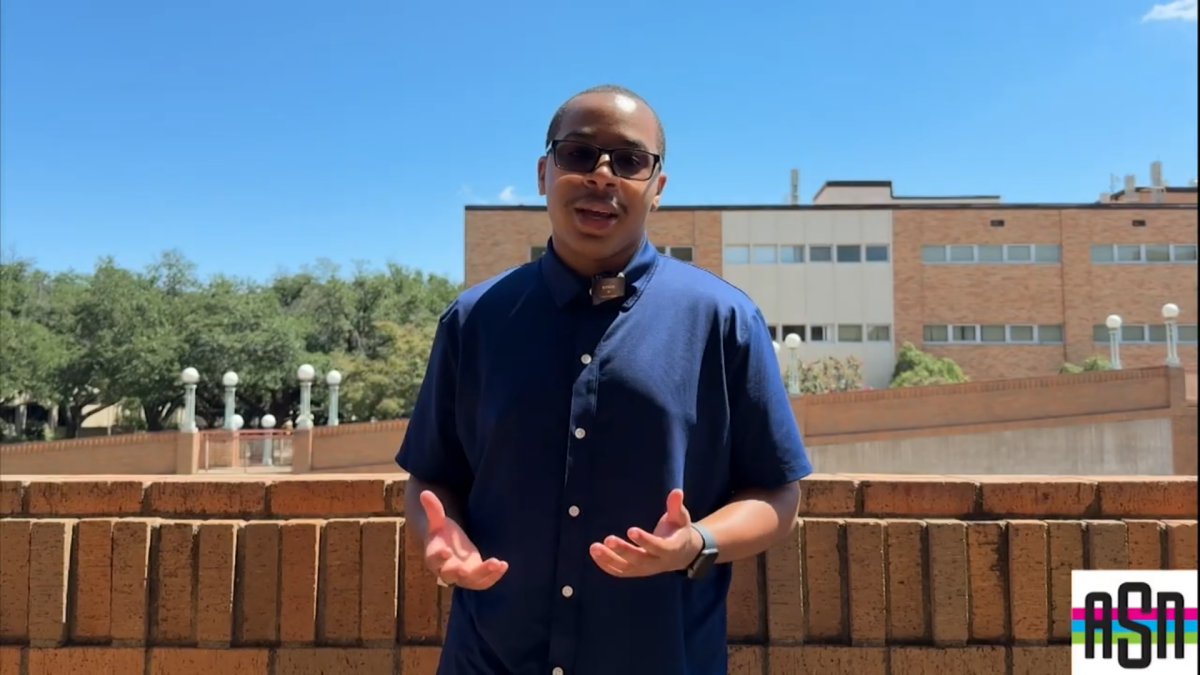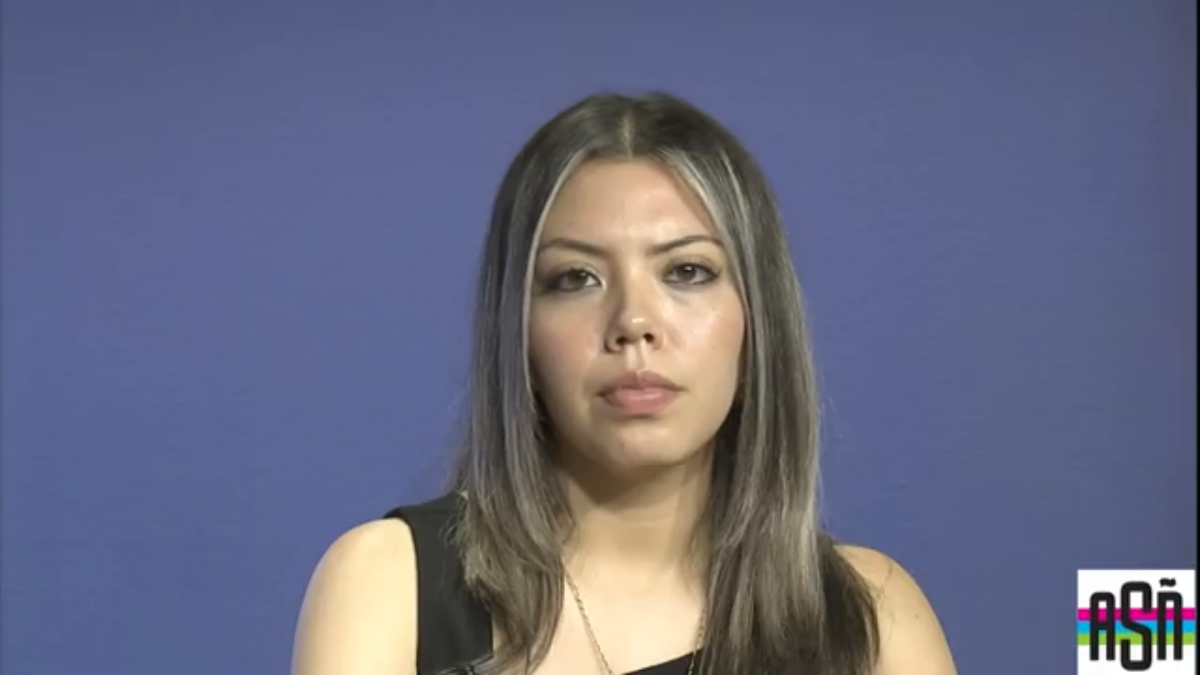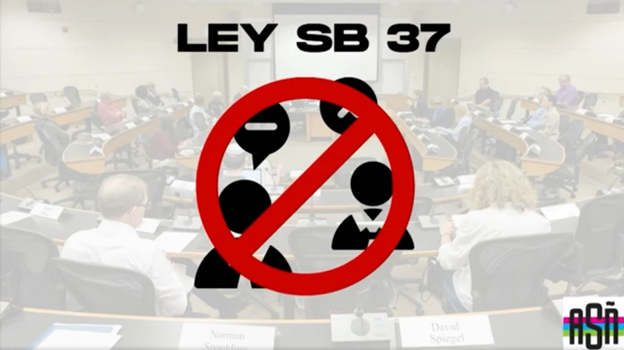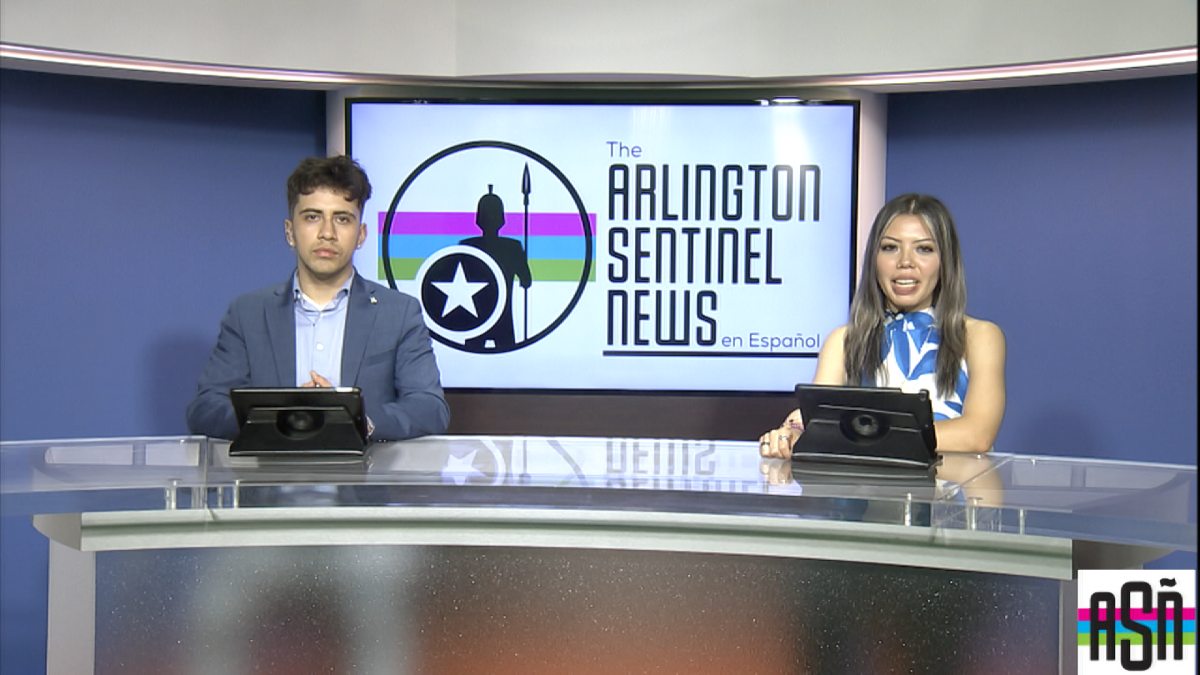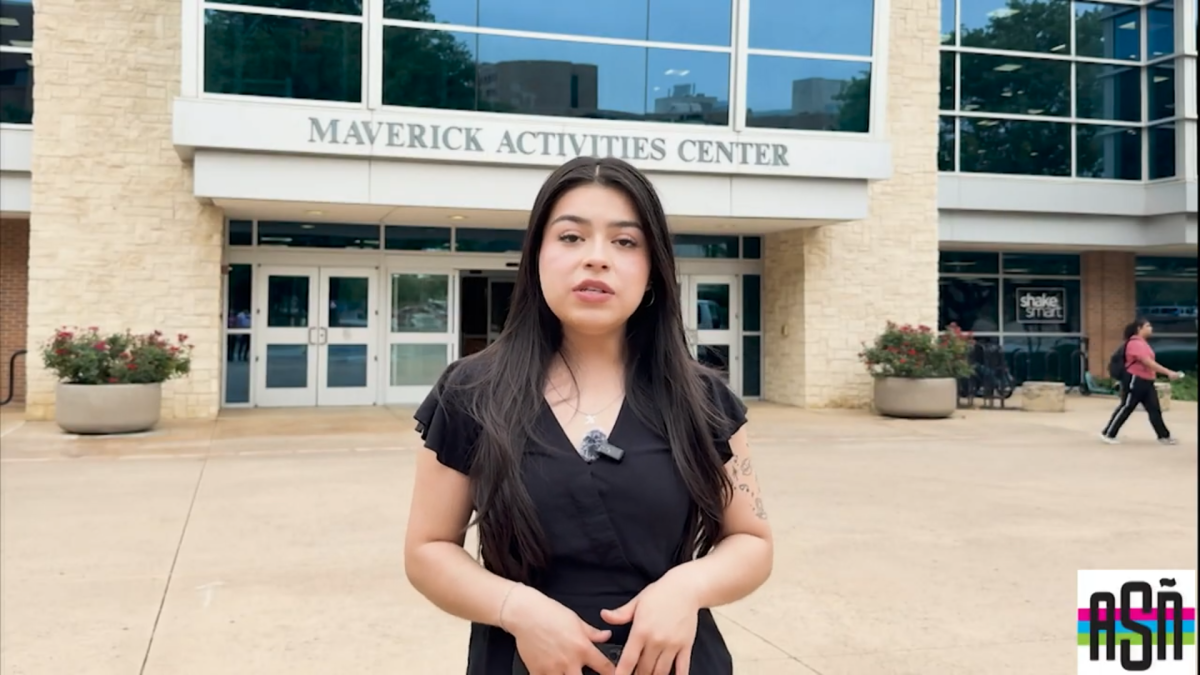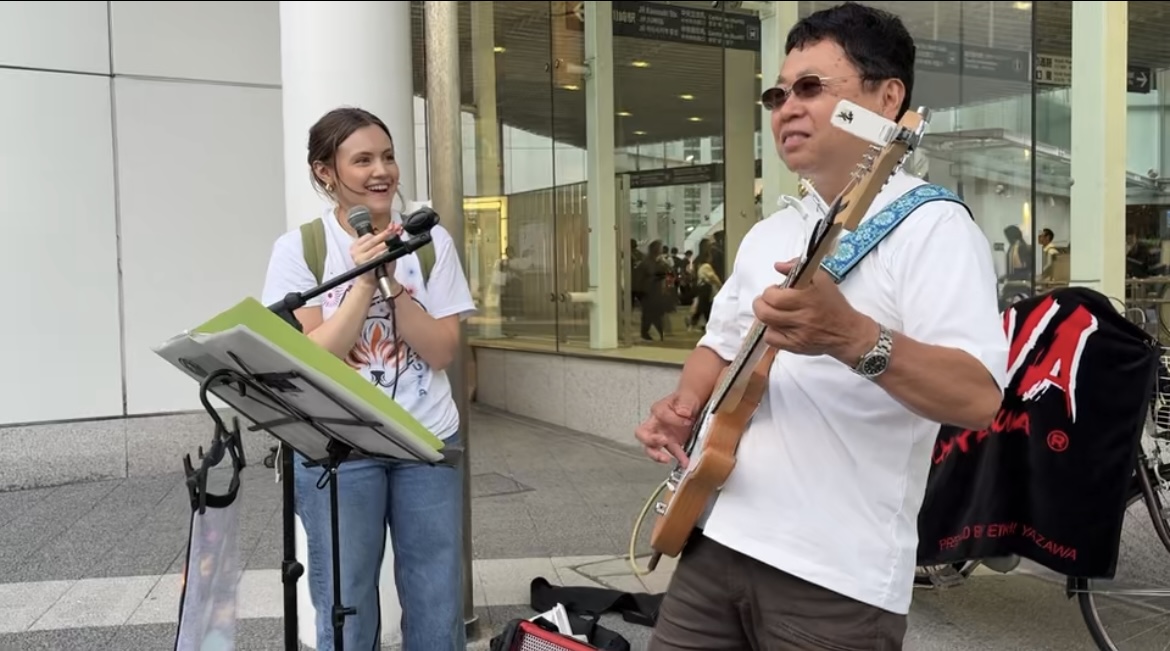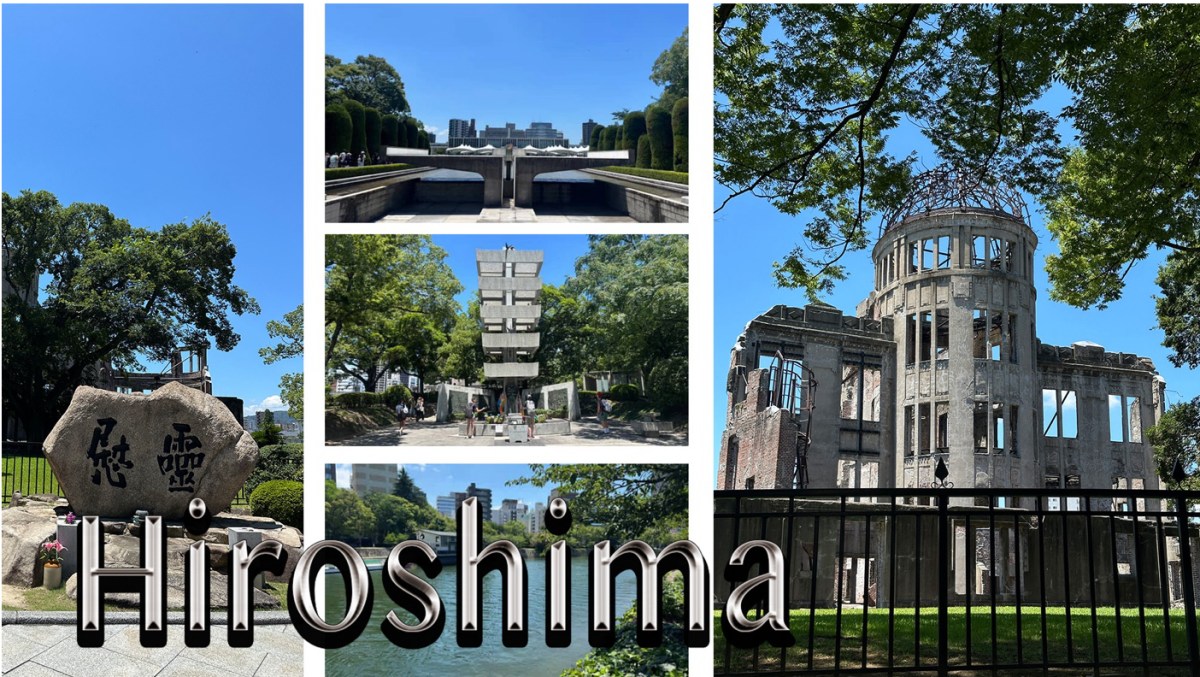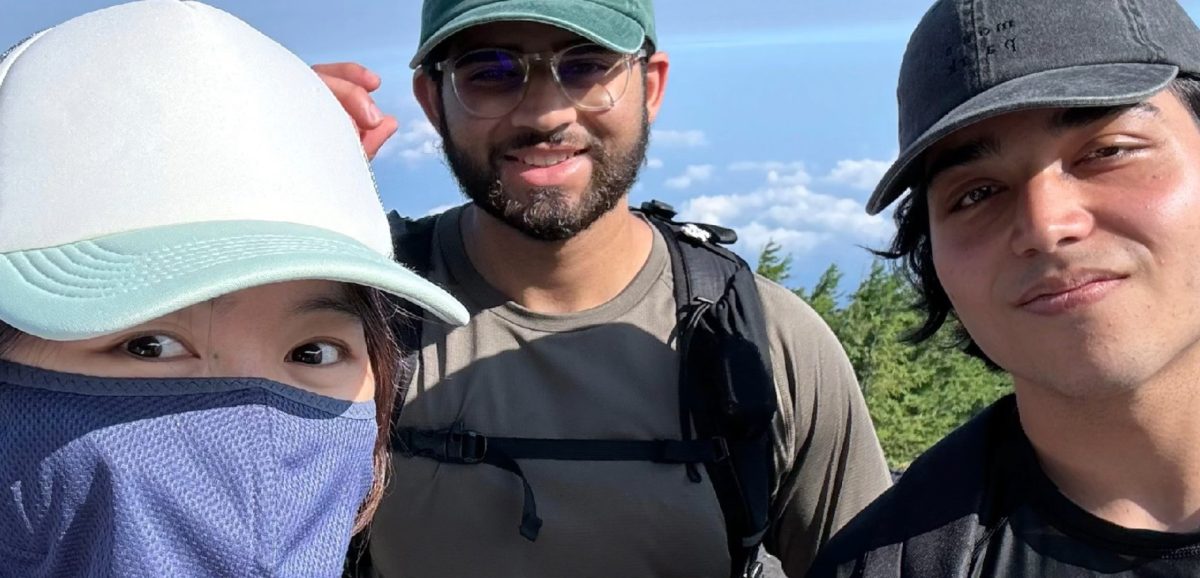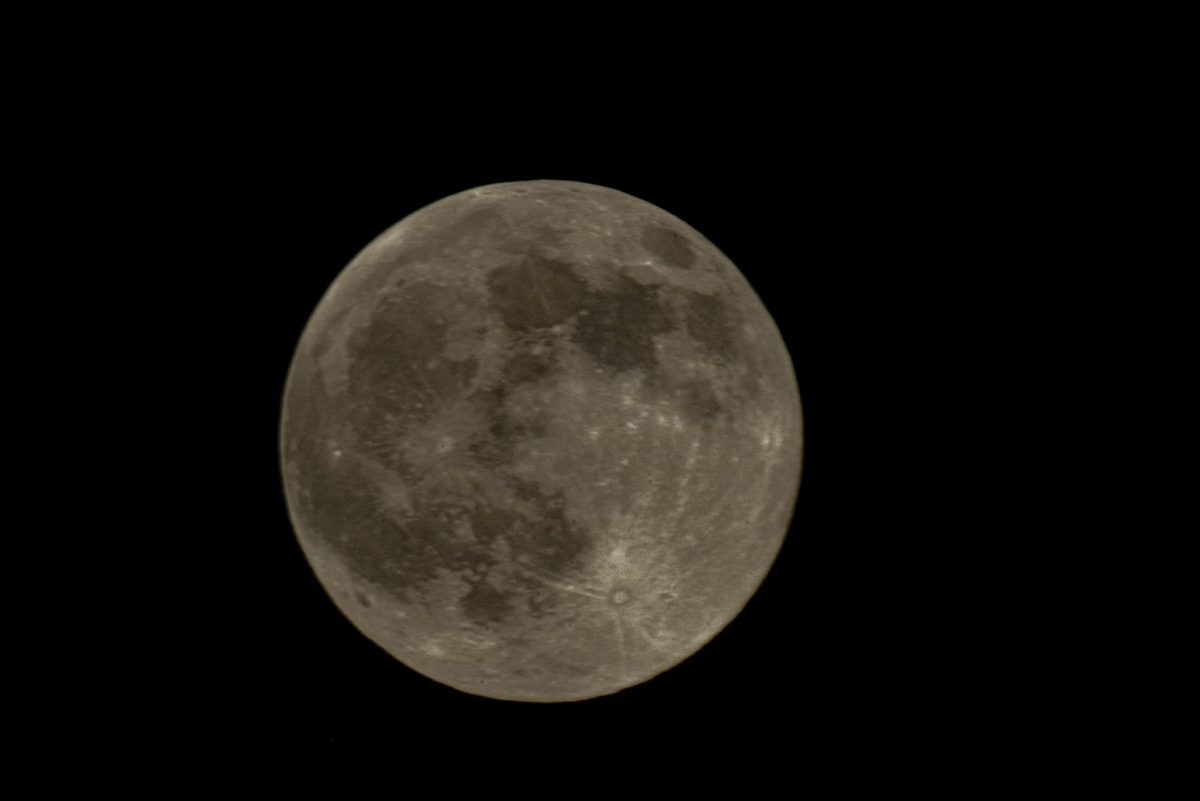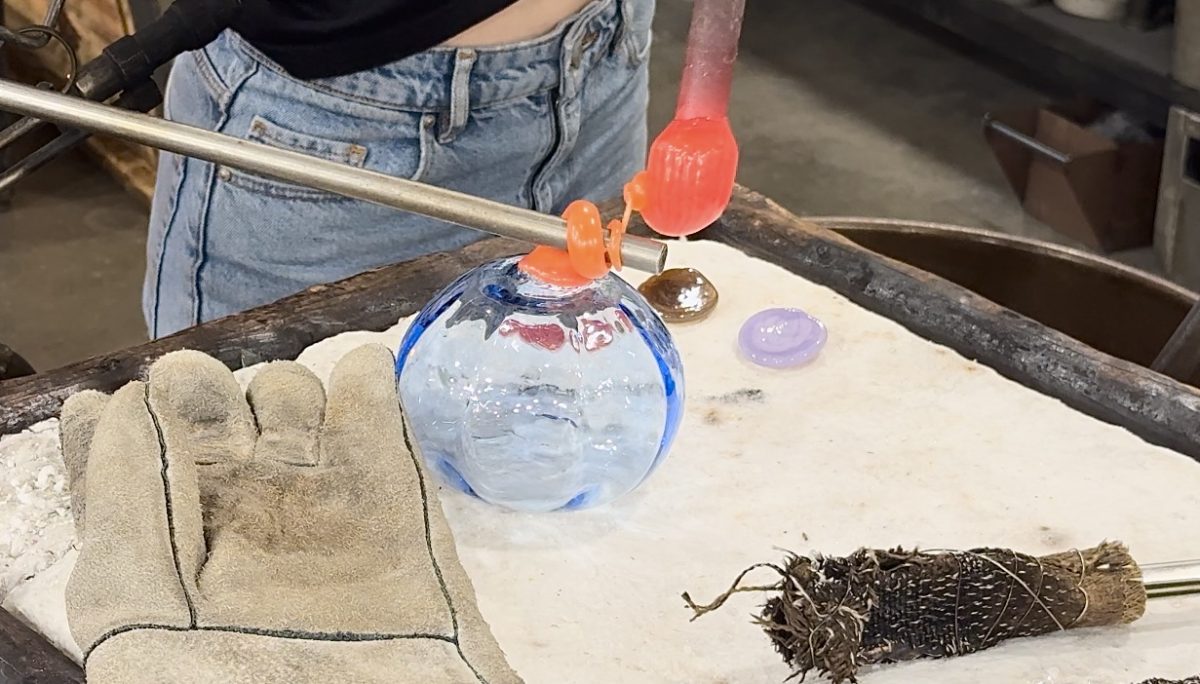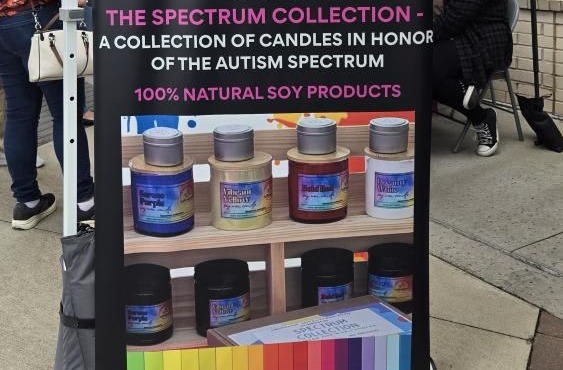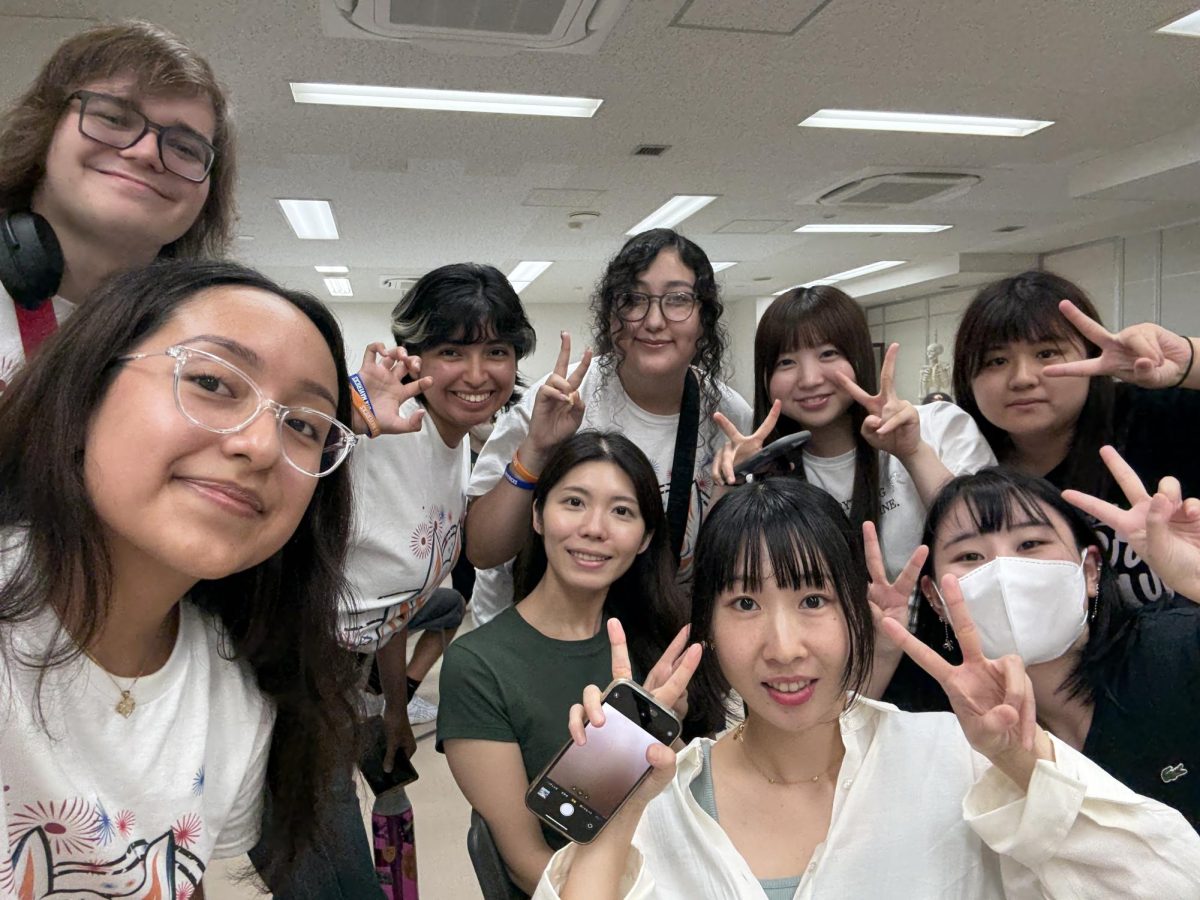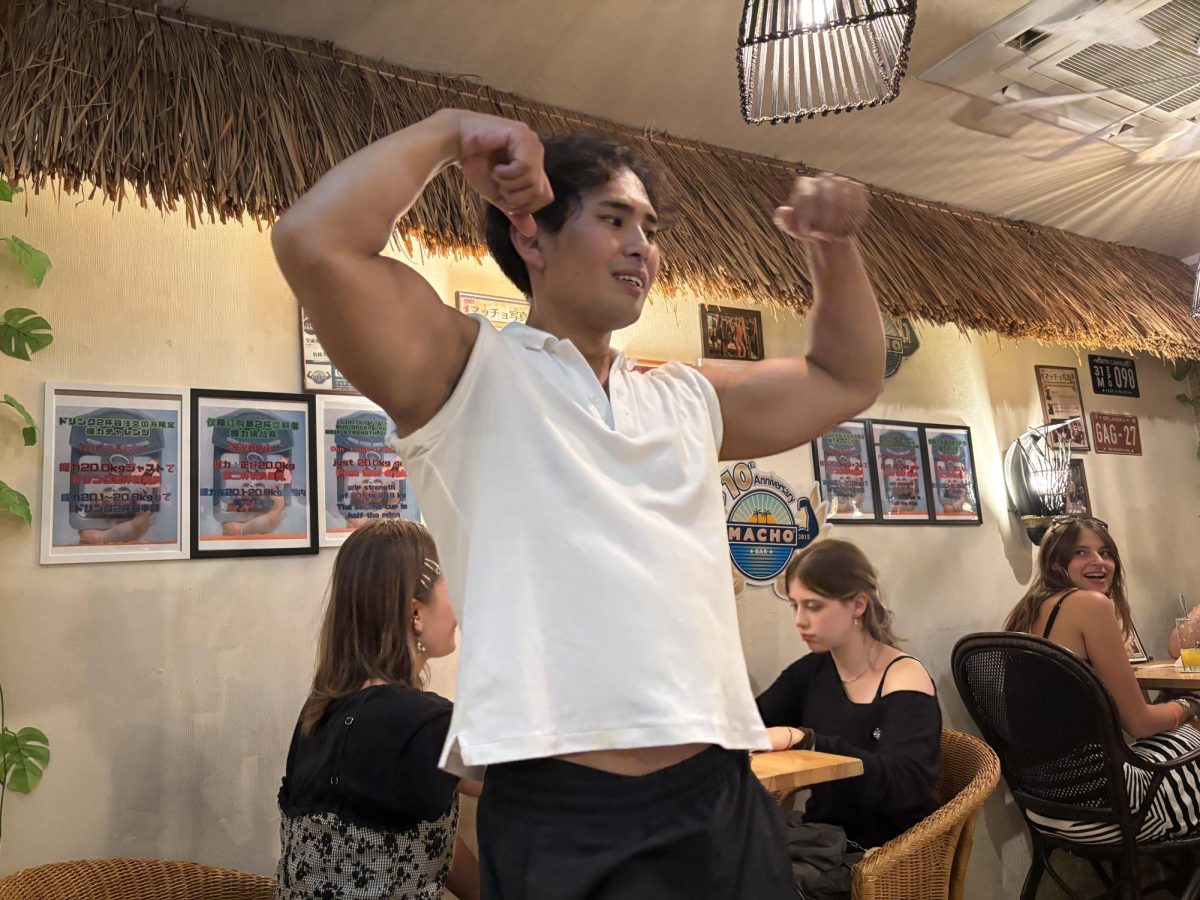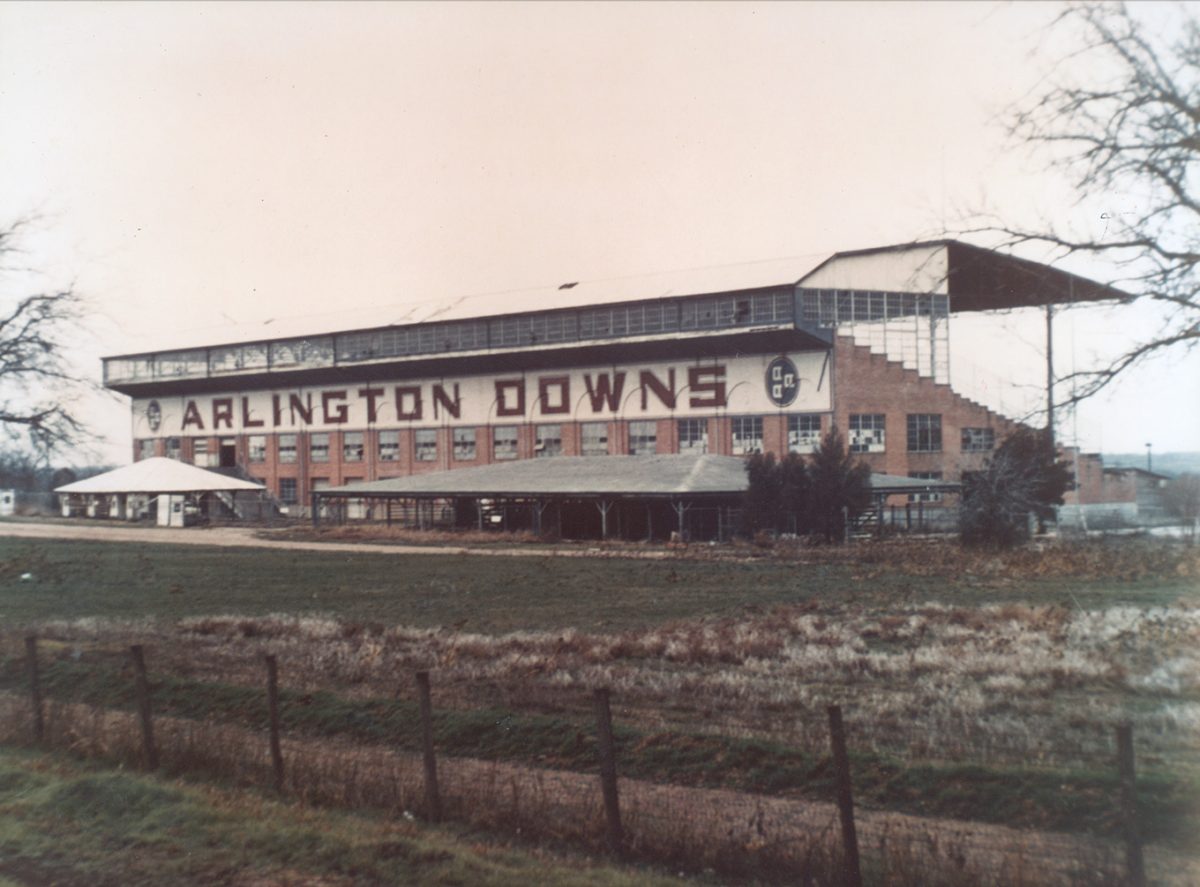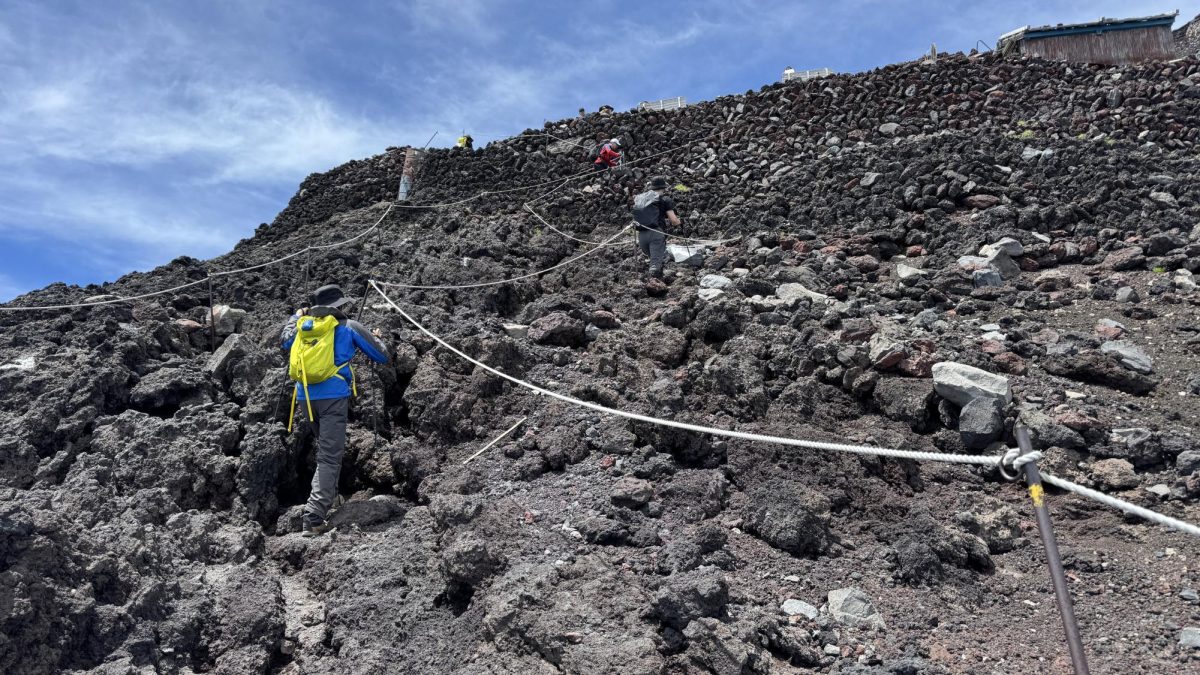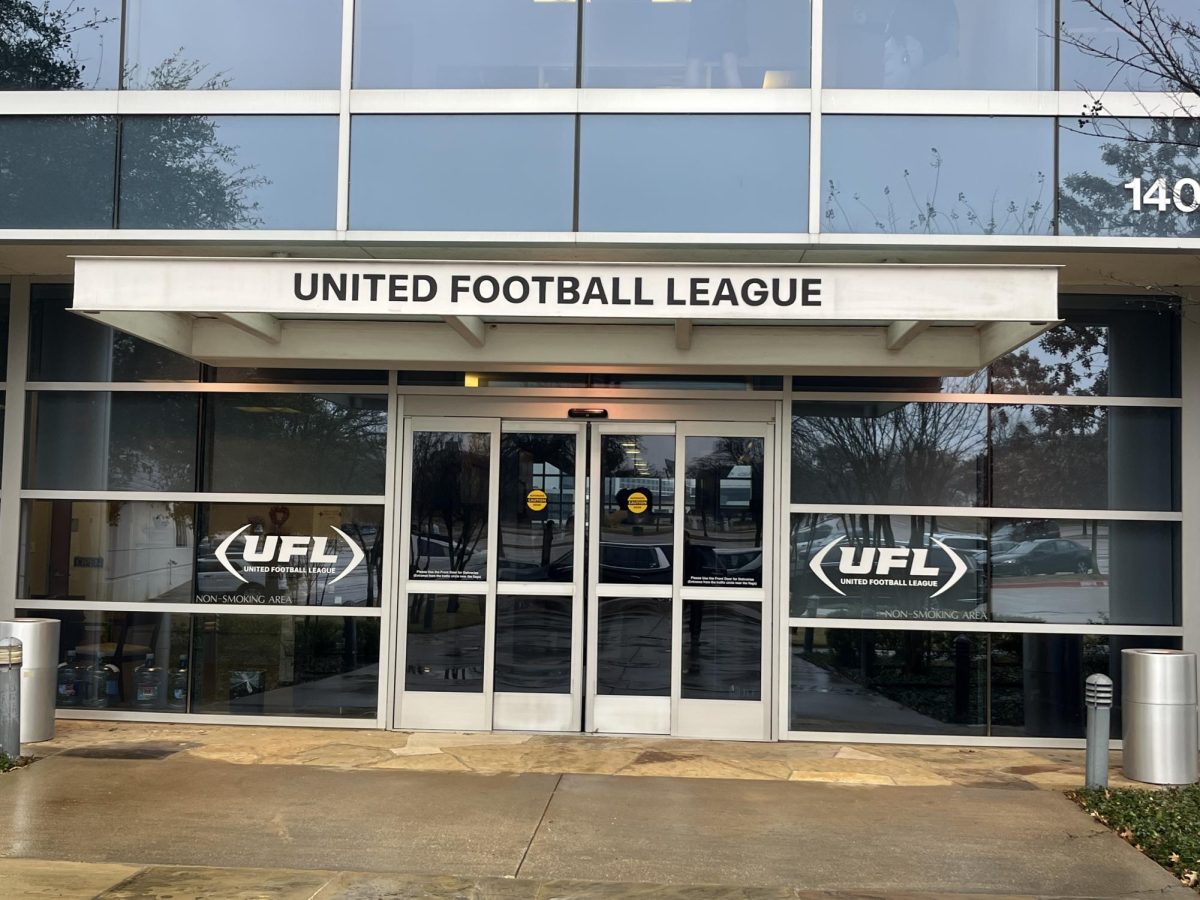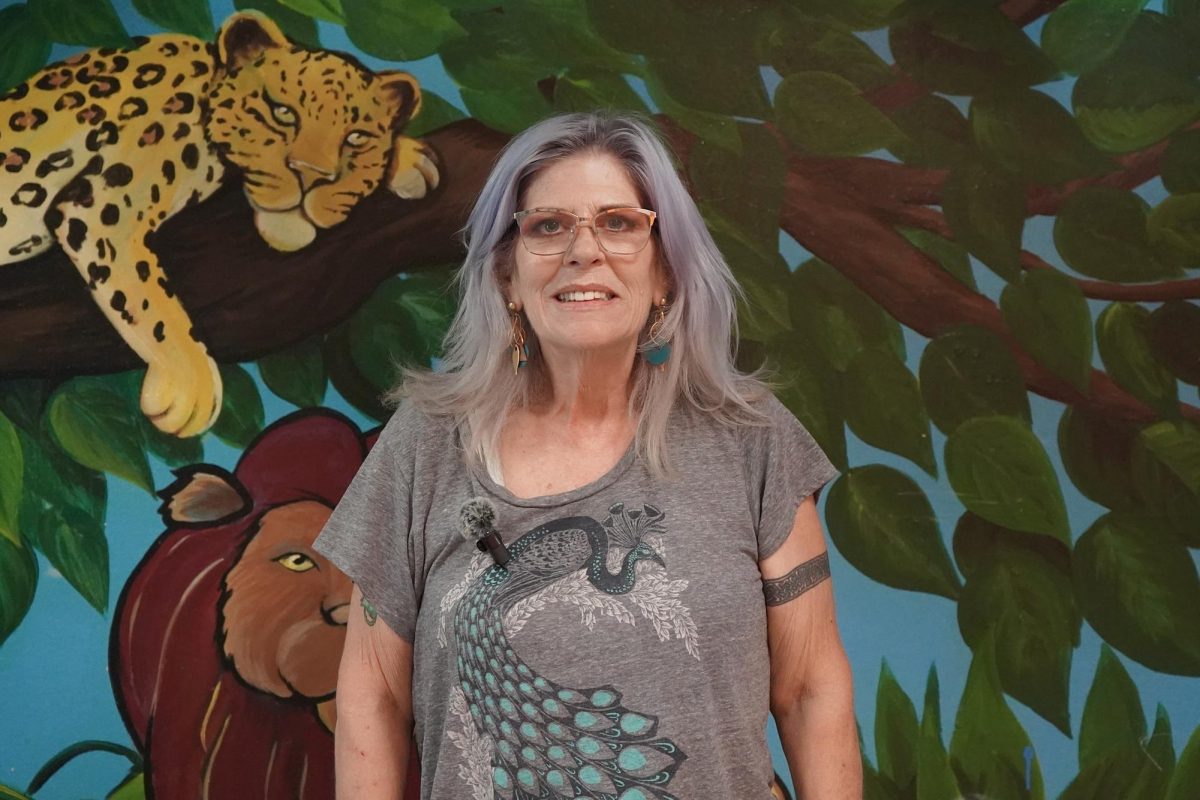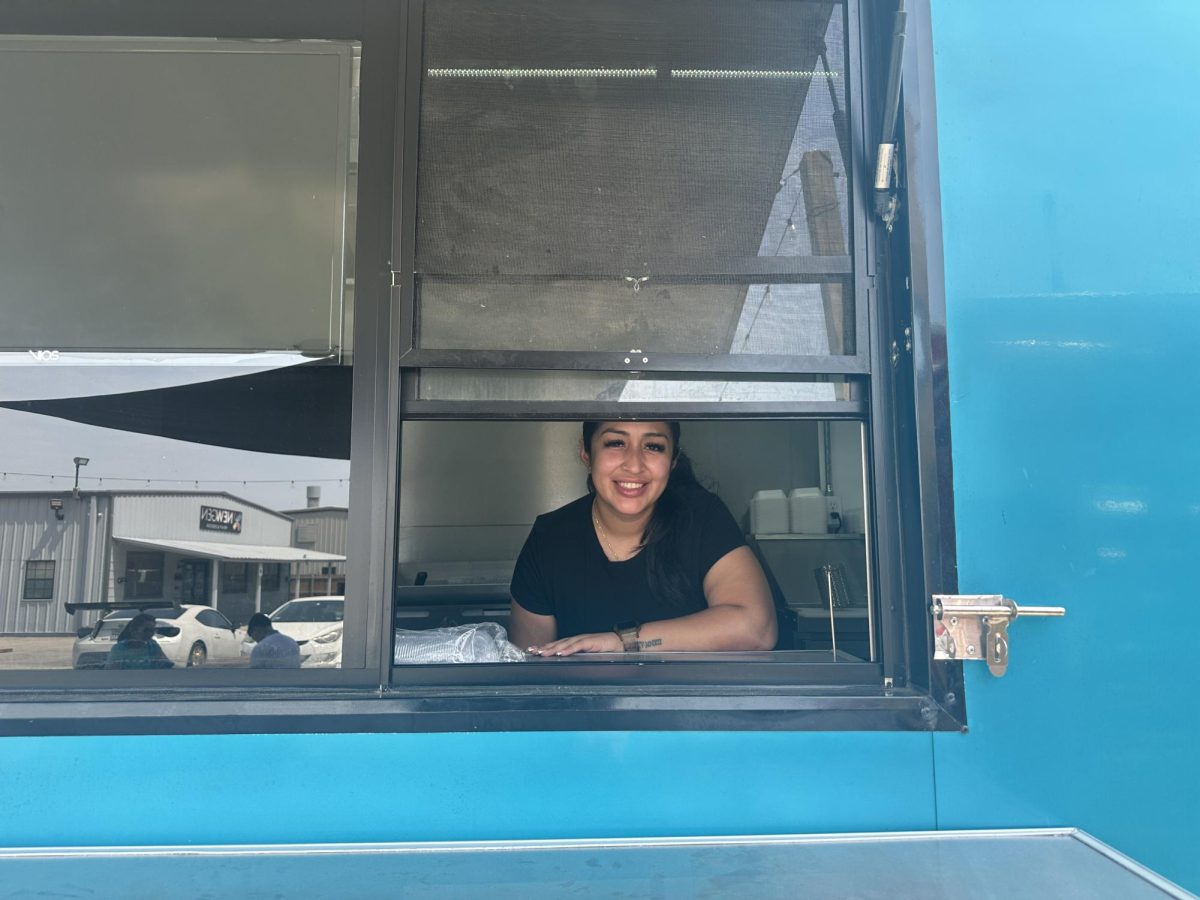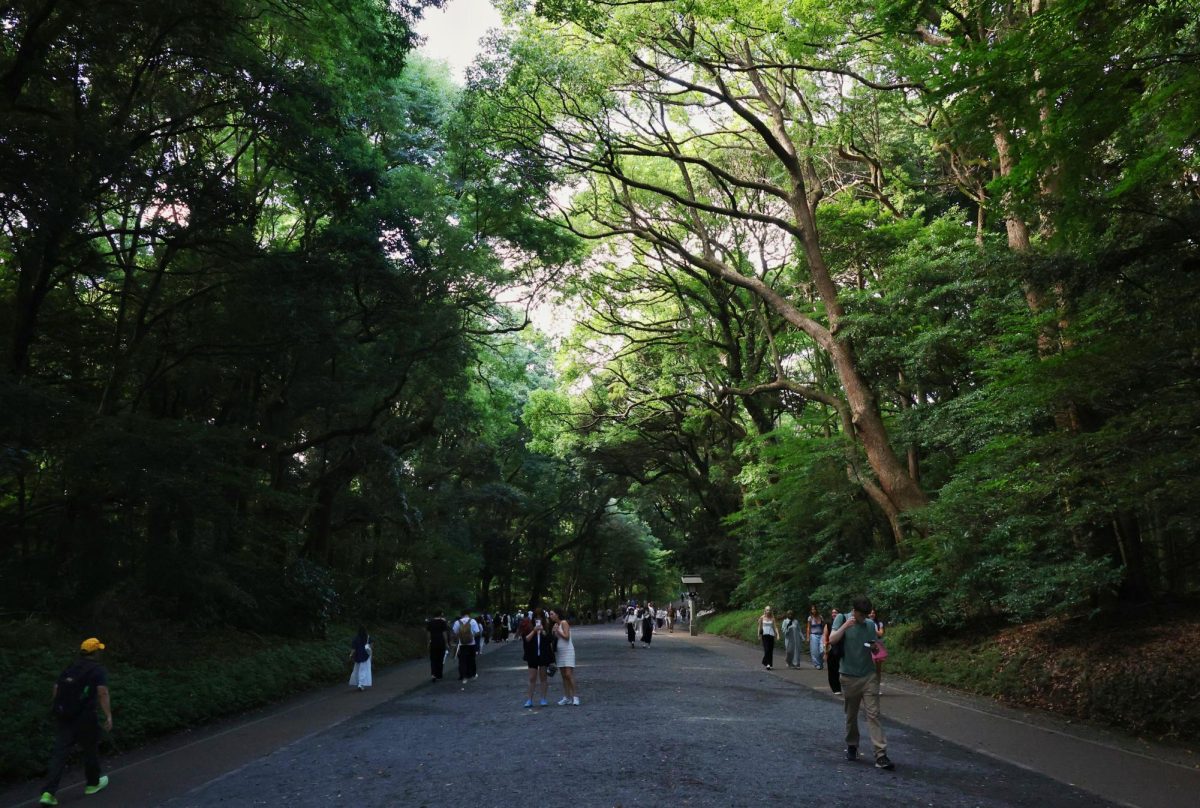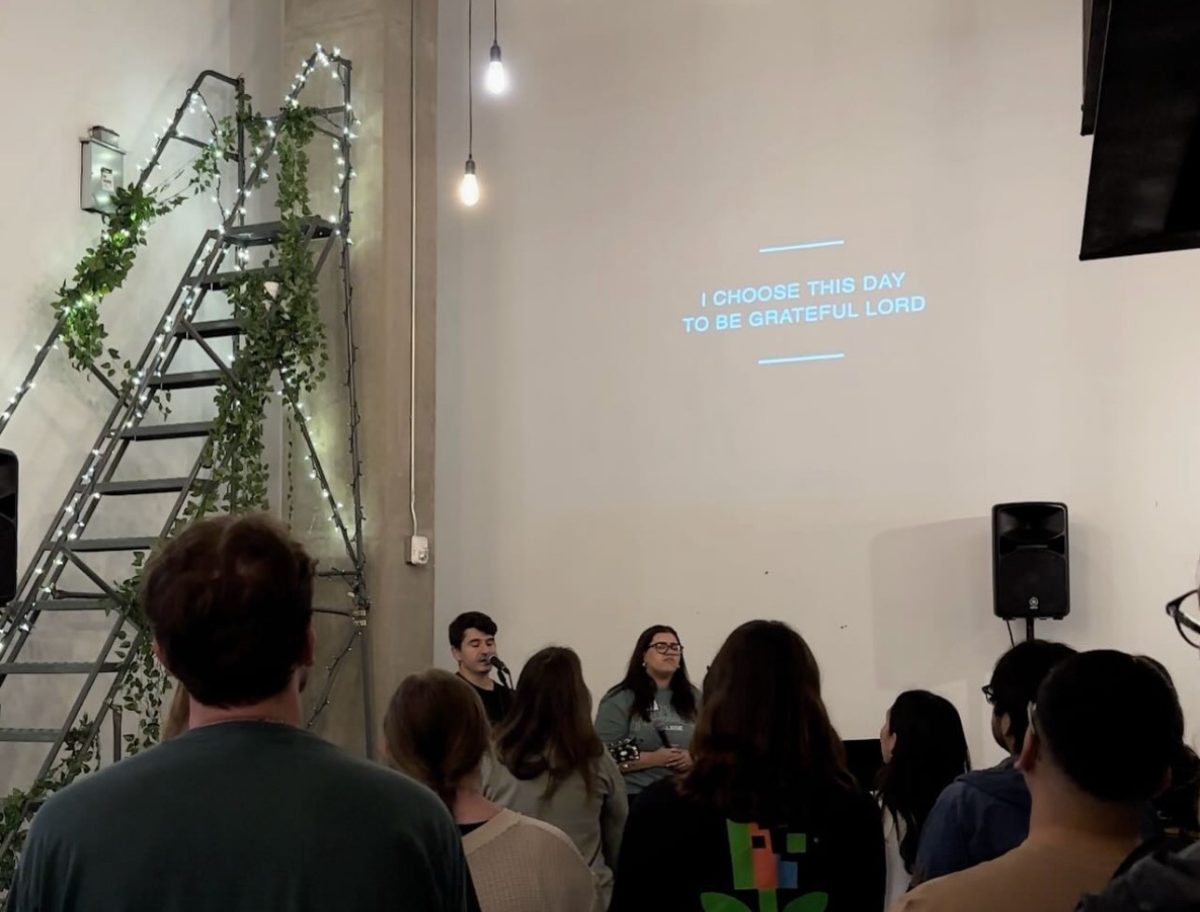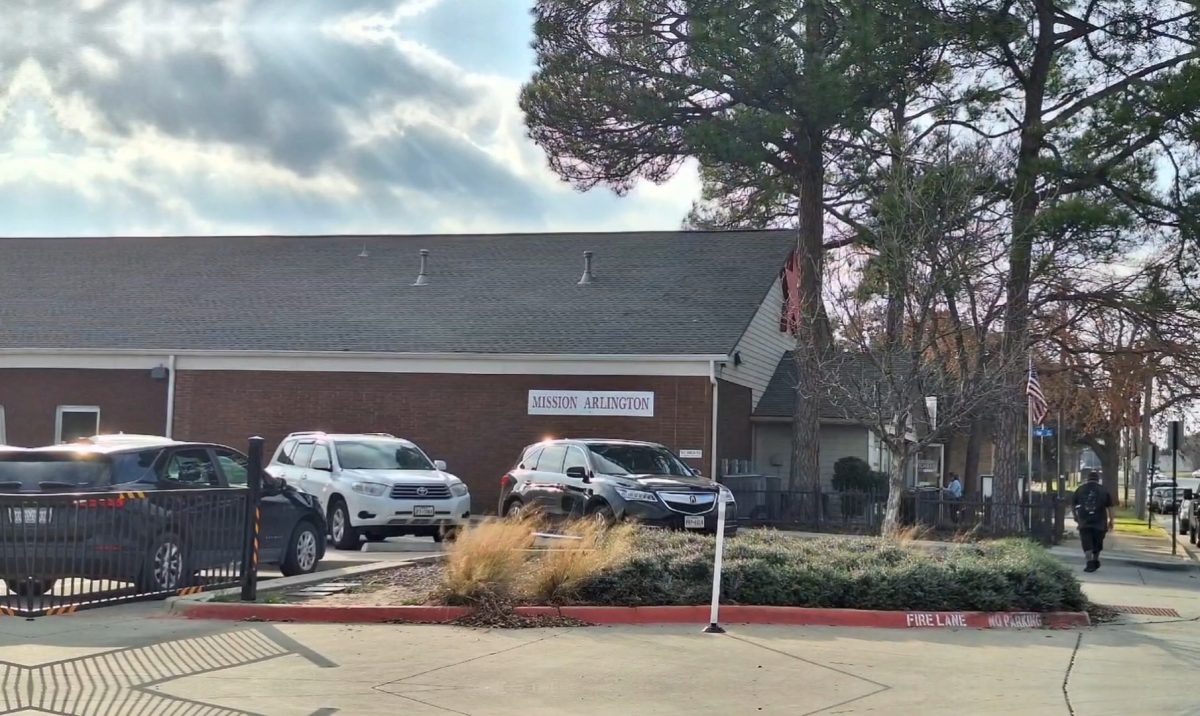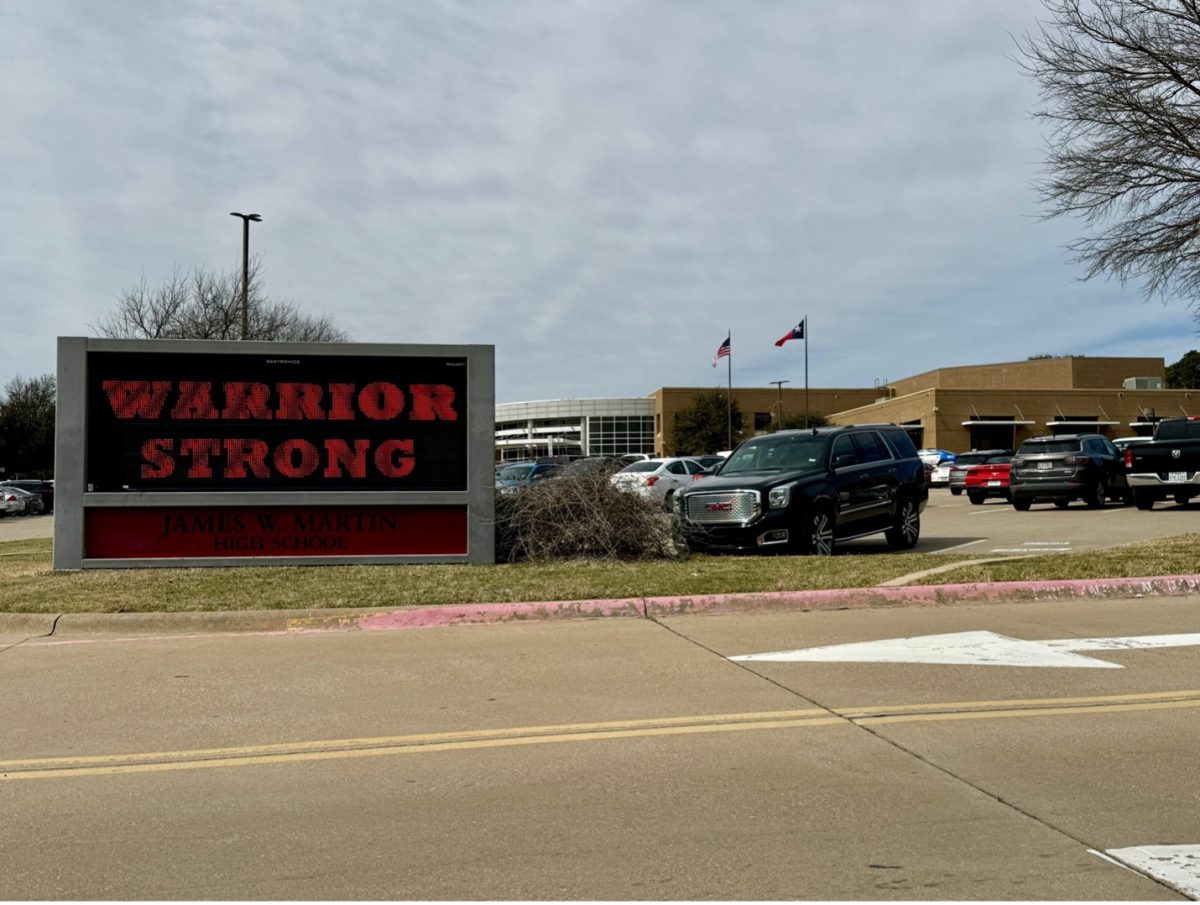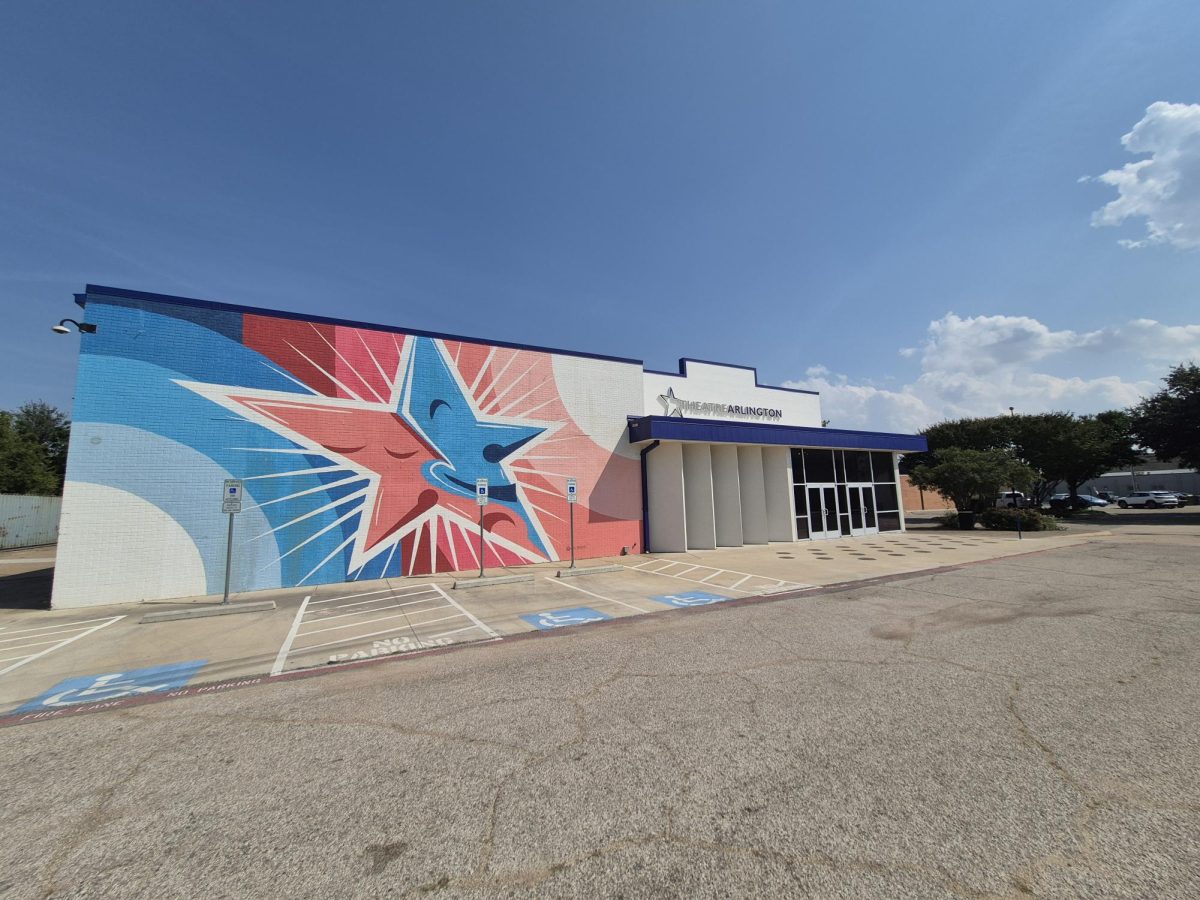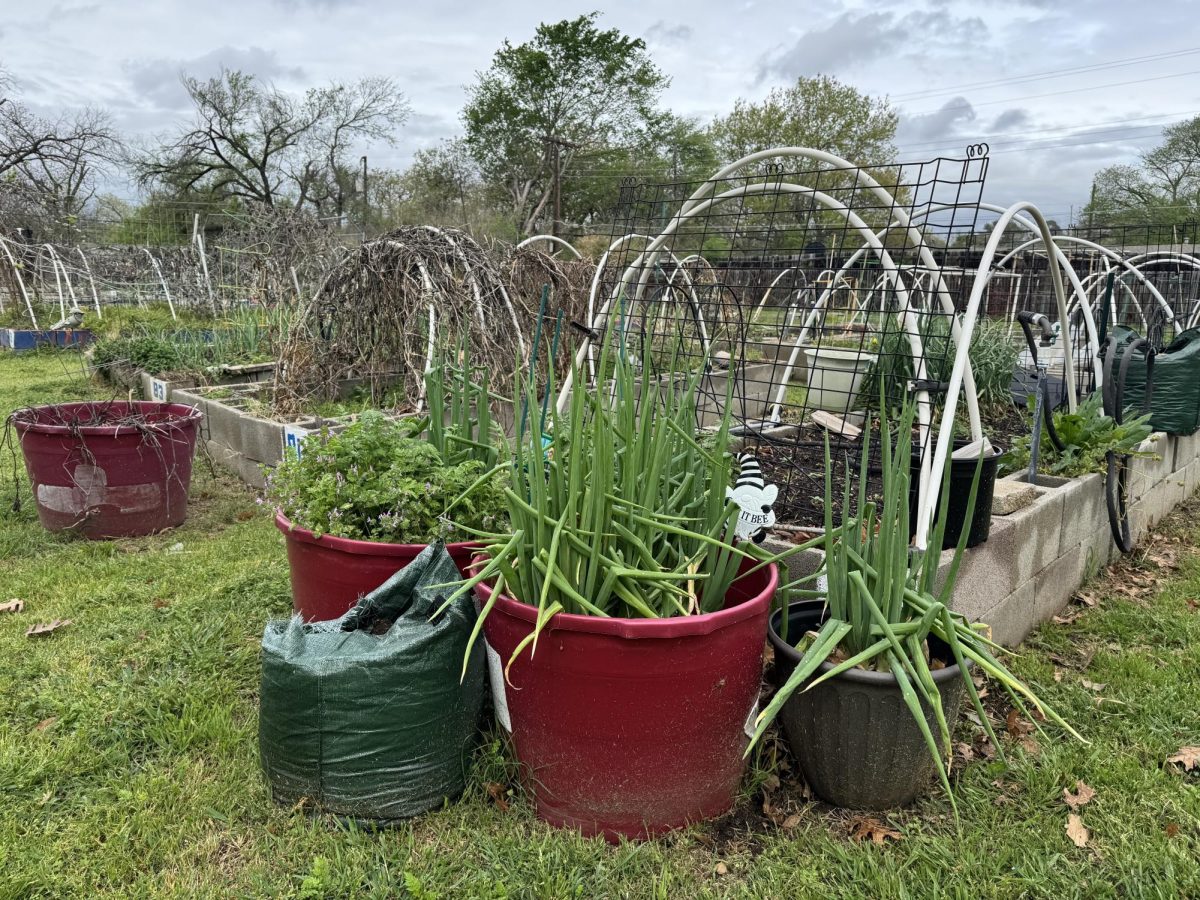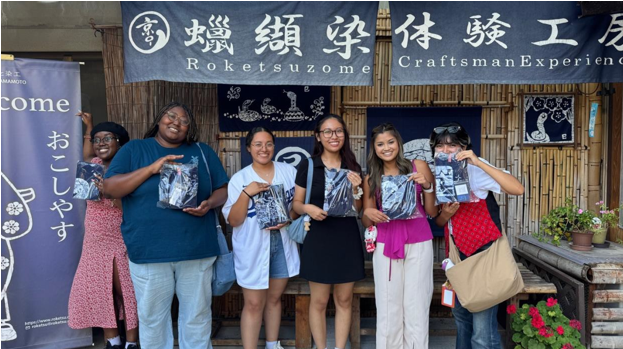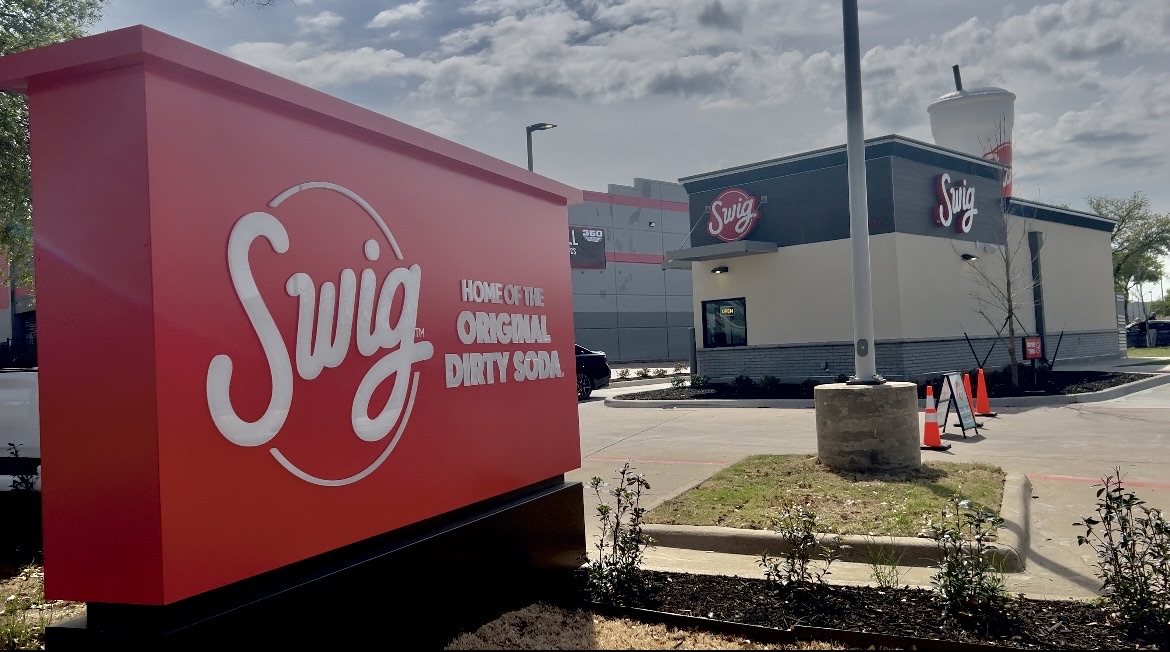ARLINGTON, Texas—Four years before Londyn Franklin would enter high school, she knew her passion laid in the field of engineering.
A resident of DeSoto, Franklin attended McCowan Middle School and before she would move on to DeSoto High School, she found out there weren’t many opportunities that could turn her passion into action.
“So, I was like, ‘OK, I need to find a school that’s going to benefit me,’” she said.
In 2021, she decided to apply to the Arlington Independent School District’s STEM Academy at Martin High School—a roughly 30-minute commute from her home in DeSoto. Arlington ISD is an open district, meaning it’s open to any students living in any area who are looking to fulfill their educational goals. This rule applies to other of the specialized programs within Arlington ISD, including Pathways in Technology, or P-Tech, at other high schools in the district.
Program debuts in 2015
The STEM Academy, which debuted in 2015, is a specialized program designed by teachers in partnership with the University of Texas at Arlington. Its mission is to prepare students to enter STEM college majors and careers through relevant, innovative and rigorous learning experiences, according to the academy’s website.
Franklin’s admissions process was completely virtual due to the COVID-19 pandemic. She had to do her interview virtually and submit her writing samples online.
“And then, I got the email that said I was accepted and I was like, ‘Oh my gosh, thank you,’” Franklin said. “I really needed a school that was going to have STEM education.”
According to the Texas Education Agency, education in STEM—the acronym for science, technology, engineering and mathematics—integrates hands-on teaching and learning where students learn to apply knowledge with design-based thinking to solve real-world problems, ultimately preparing students for future career opportunities in the STEM workforce. STEM occupations in the United States are projected to grow 10.4% by 2033, faster than the average for all occupations at 4%, according to the U.S. Bureau of Labor Statistics.
Students at the Arlington ISD STEM Academy can choose between four pathways—engineering, biomedical science, computer science and math/science—to earn credits for both the high school and collegiate level. The program also offers extracurricular opportunities like internships, job shadowing and community service, according to the academy’s website.
Franklin, who chose the engineering pathway, said she’s experienced opportunities that she wouldn’t have gotten back in her hometown, like going to NASA’s Johnson Space Center, where she found her calling for a career in aerospace engineering. After the trip, Franklin applied to the STEM Enhancement in Earth Sciences summer internship from the National Aeronautics and Space Administration and the University of Texas at Austin.
“I was at UT for two weeks and came back a completely different person,” Franklin said. “Coming back from UT, I thought, ‘Wow, I can actually do this, I can actually obtain these things.’”
Franklin said throughout her time at the STEM Academy, she’s received an immeasurable amount of support from her teachers and fellow students, and she became more involved in the campus community through STEM organizations and other off-campus opportunities, like witnessing a rocket launch.
Public perceptions about STEM in the U.S.
Most Americans believe K-12 STEM education in the U.S is either average or below average compared to other wealthy nations, according to the Pew Research Center. Just 28% of U.S. adults say America is the best in the world or above average in K-12 STEM education compared with other wealthy nations. A third say the U.S. is average, while another 32% think the U.S. is below average or the worst in K-12 STEM education.
Jason Forsythe, STEM Academy coordinator at Martin High School, said when it comes to choosing students to be accepted into the program, one of the main factors is the grades students receive in junior high, but that isn’t everything.
He said the application process is completely holistic, using interview questions and essay prompts to get to know the student more and what they are capable of outside the classroom. Based on the student’s application, grades, interview, essays and teacher recommendations, the most qualified applicants will be admitted.
“We’re the only specialized program in the district that looks at grades,” he said. “We find that the No. 1 determining indicator on whether or not a student is going to be successful is if they’re academically driven.”
For the 2023-2024 school year, Forsythe said the Martin STEM Academy received 387 applications and conducted interviews for 226 applicants. After the interviews, 172 students were accepted into the program and all of them enrolled.
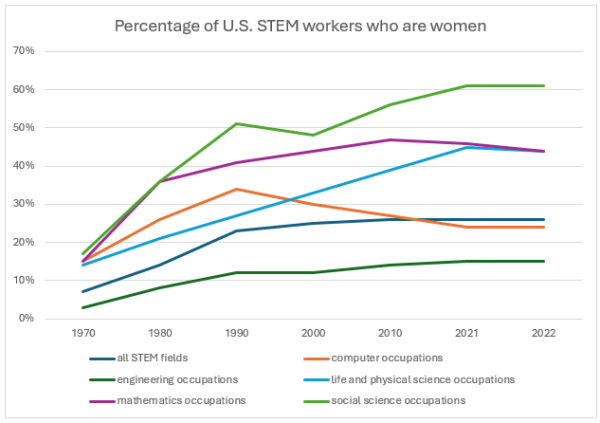
According to a 2021 report from the Pew Research Center, progress in increasing gender, racial and ethnic diversity is uneven across STEM jobs in the U.S. Black and Hispanic workers remain underrepresented in the STEM workforce at 9% and 8%, respectively. White workers remain overrepresented at 67% and Asian workers have grown considerably to 13%, according to the report. Women make up for a quarter or fewer of the STEM workforce, particularly in computing and engineering jobs, according to the Women’s Bureau at the U.S. Department of Labor.
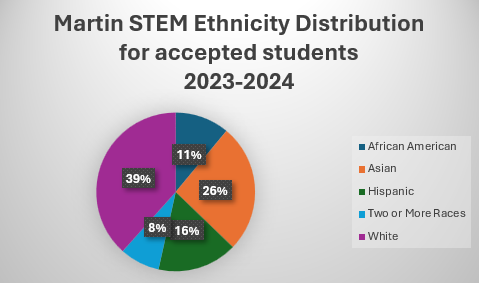
Similar trends can be seen through the Martin STEM Academy’s enrollment numbers for the 2023-2024 school year, with 38% being White students, 26% Asian students, 16% Hispanic students and 11% African American students. Forsythe said female students outnumber male students in the Martin STEM Academy, with 51% of accepted applicants in 2023 being female.
‘We’ve made a difference’
As a person of color, Franklin said she’s seen diversity increase among the student population at the Martin STEM Academy. She had seen photographs of the early years at Martin High School where the vast majority of students were white.
“We’ve made a great difference,” Franklin said. “I don’t reside in Arlington and the neighborhood I’m in is a black neighborhood, so it was great to be able to get the opportunity to come out to a school that had better resources than where I was.”
When it comes to marketing the Martin STEM Academy to students within the district, Forsythe said he and other faculty members personally visit the middle schools to recruit students, instead of hosting an information meeting on the Martin campus.
“That honestly was a blind spot for the Academy for a long time,” he said. “We sought out a contact at every junior high in the district and we’d go and talk to every algebra one student in the district.”
Forsythe said because he and other faculty members increased the STEM Academy’s marketability, other specialty programs, like the Arlington Collegiate High School, began following in their footsteps.
“They actually have a lady at the district now whose job, in the fall, is to coordinate with counselors, and junior highs shut down their whole campus for a day and all the specialized programs go in and take over for a day,” Forsythe said.
Since 2015, the STEM Academy at Martin High School was one of the only specialized programs available to eighth graders entering high school. But in 2022, Arlington ISD launched P-Tech at other high schools, specifically Lamar, Sam Houston, Bowie and Seguin.
P-Tech
P-Tech is another open-enrollment specialized program that allows students least likely to attend college an opportunity to receive both a high school diploma and a credential or an associate degree, according to the TEA. The high schools that offer P-Tech programs each have different specialties, like Lamar High School, which focuses on business and cybersecurity.
Teri Williams, P-Tech assistant principal at Lamar High School, said the program is the largest P-Tech program in the district after being in operation for three years.
The main difference between the STEM Academy and the P-Tech programs is the availability of college credit and the pathways that can be pursued. Students at the STEM Academy have a chance to earn up to 32 hours of college credits toward a STEM major at UTA, while P-Tech requires students to earn college credits at the same time they’re earning high school credits to earn either an associate degree or other certifications, without travelling between two different campuses.
Williams said she encourages P-Tech students to pursue the associate degree but both choices can help students be prepared for their future careers.
“My understanding of the STEM Academy at Martin is that it’s kind of all academic, that’s my understanding of it, versus here at Lamar, our students are involved in all the things they’re involved in, you know, Vi-Queens, which is our dance team, we’ve got students in every sport available on campus,” Williams said. “Basically, they just get the opportunity to have more of the high school student experience then some other campuses like our collegiates and our STEM Academy.”
Regarding student diversity in Lamar’s P-Tech program, Williams said Lamar is one of the most diverse campuses she’s worked at given her experience working as an educator for 16 years and moving from Dallas ISD to Arlington ISD. Compared to the STEM Academy, P-Tech’s diversity numbers are significantly higher.
“When it comes to it, the major thing we’re looking for is students that are at-risk and that tends to be your Hispanic and African American students and the state doesn’t necessarily allow us to look at ethnic background but there are other indicators we can look at,” she said. “Looking at our campus as a whole and looking at the inner P-Tech program within the campus, I think it’s allowed for quite a bit of diversity because we are focusing efforts on the students that are here in our district.”
As the program grows, Williams said she hopes to see opportunities to track student success overtime as they go on to college or pursue their careers to see the benefits and areas of improvement for the program.
STEM and elementary school students
STEM education in Arlington ISD isn’t limited to students in high school. It’s also offered for those at a younger age.
Pearcy Elementary—known as Pearcy STEM Academy since 2019—offers students in kindergarten through sixth grade a curriculum with STEM lessons built into educational content taught by STEM-certified teachers.
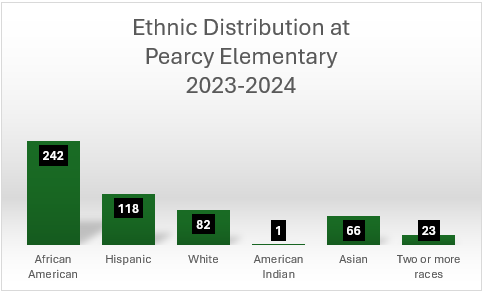
Sarah Brooks, principal of Pearcy STEM Academy, said while some teachers are STEM-certified, it’s not a requirement for their faculty. The only requirement is that teachers connect with students to prioritize problem-solving skills, letting them think outside-the-box in every course for every grade level.
“We have the same curriculum, the same TEKS that every other public school has,” Brooks said. “But how can we connect it to their everyday life? How can we connect it to a problem-solving real-world experience so that way they can see where math is in everyday life?”
Brooks believes having STEM education available to students in elementary schools is important as it helps them explore various interests, like architecture and coding, while developing necessary problem-solving skills at an early age.
“We’re preparing students for jobs that don’t even exist yet,” she said. “We strive to give elementary students this basic understanding of what can we do and how can we solve problems.”
The community at Pearcy is well connected, Brooks said, as she’s seen many students go on to high school and come back to tell her about the programs they participate in, like the STEM Academy at Martin and P-Tech programs at high schools like Seguin, where Pearcy feeds into. Brooks said parents have asked her if their student attends the Pearcy STEM Academy is guaranteed a spot at the Martin STEM Academy or any of the four P-Tech programs.
“I say, ‘No, however, STEM is really hard with problem-solving,” she said. “It’s not a yes or no, it’s what can you come up with.”
Because Pearcy students are getting exposed to STEM education at an early age, Brooks said she’s hopeful that they will be prepared and equipped with the necessary skills to take on the workloads from Martin STEM and P-Tech programs.
Every elementary school in the district has two STEM labs, she said, but the difference between the labs and the academies is that students are more exposed to STEM education on a regular basis in the academies compared to students who occasionally visit the labs for their classes in the traditional elementary schools.
Brooks said this most recent year, Pearcy has 97 transfer students, which is roughly one class size for each grade level. The majority of transfer students, she said, come from other nearby school districts given the school’s location.
“We serve all over,” Brooks said.
‘I’m taking the kid that’s willing’
For the upcoming 2025-2026 school year, the STEM Academy’s Forsythe said there were many students who applied to the program with exceptional grades, but what he and other faculty members started looking for were the students who still had good grades, but there’s room for improvement.
“If I had to choose between able and willing, I’d choose willing because we have a lot of people that are able to do something, but they’re just unwilling to do it with their whole heart, the best they can, but if I have someone willing to do something wholeheartedly the best they can they just lack on the ability part, I can teach the ability part,” he said. “That’s why I became a teacher was to work on that part, so I’ll teach the ability as long as you keep being willing to meet me halfway and every day of the week, I’m taking the kid that’s willing.”
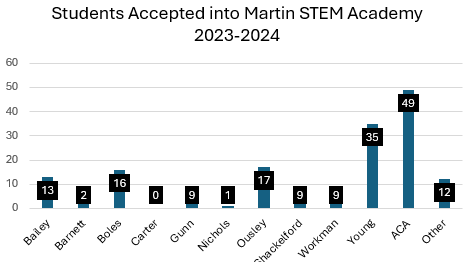
Williams said she’s thought about how improvements can be made to the P-Tech program at Lamar High School, which will have its first graduating class in 2026. With this being her first year as assistant principal for P-Tech, Williams said her future goals for next year are planning for more effective communication among parents and students to ensure success within the program.
Franklin said she’s not sure which college she’ll attend after graduation, but she’s received acceptance letters from the University of Michigan and the University of Texas at Austin. No matter where she goes, she plans to major in aerospace engineering and minor in mathematics. After college, Franklin hopes to work as an aerospace engineer for either NASA or SpaceX.
She said she’s grateful for the opportunities she’s been given through the Martin STEM Academy that she may not have had in DeSoto.
“Their open district policy is something I really appreciate because without it, I wouldn’t be here,” Franklin said.

